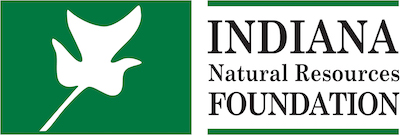A Spotlight on Our Partnership with the Duke Energy Foundation

During the past several years, a partnership between the Duke Energy Foundation and the INRF blossomed into one that made a positive impact on the entire state.
In total, Duke Energy has awarded the INRF $240,000 to support our mission. Our work together funds programs for the Indiana DNR that promote stewardship of Indiana’s natural resources. The projects we support focus on conservation, education and outdoor recreation initiatives that will inspire the next generation of conservation leaders, and Duke Energy shares a passion for those initiatives.
“Duke Energy believes strongly in the work of the DNR and INRF to improve outdoor opportunities for all Hoosiers at our state parks and recreation areas,” said Stan Pinegar, Duke Energy state president for Indiana. “It’s really an honor to support these projects and the committed employees of the DNR and INRF who add so much to the quality of life in our state.”
The INRF and Duke Energy combined forces with a $25,000 grant to be used toward the DNR Division of Fish & Wildlife initiative Grasslands for Gamebirds & Songbirds. The GGS initiative provides technical and financial assistance to improve or develop grassland and pollinator-friendly habitat in selected regions of Indiana.
Grassland habitat is declining across the entire country, and the 2015 Indiana State Wildlife Action Plan identified the percentage of grassland habitat loss as the largest habitat decline in the state. Pollinators that rely on Indiana’s native grasslands, including bees and butterflies, are exhibiting population declines. The wildlife that depend on grasslands for hunting, such as gamebirds, songbirds, birds of prey and mammals also suffer from this habitat decline.
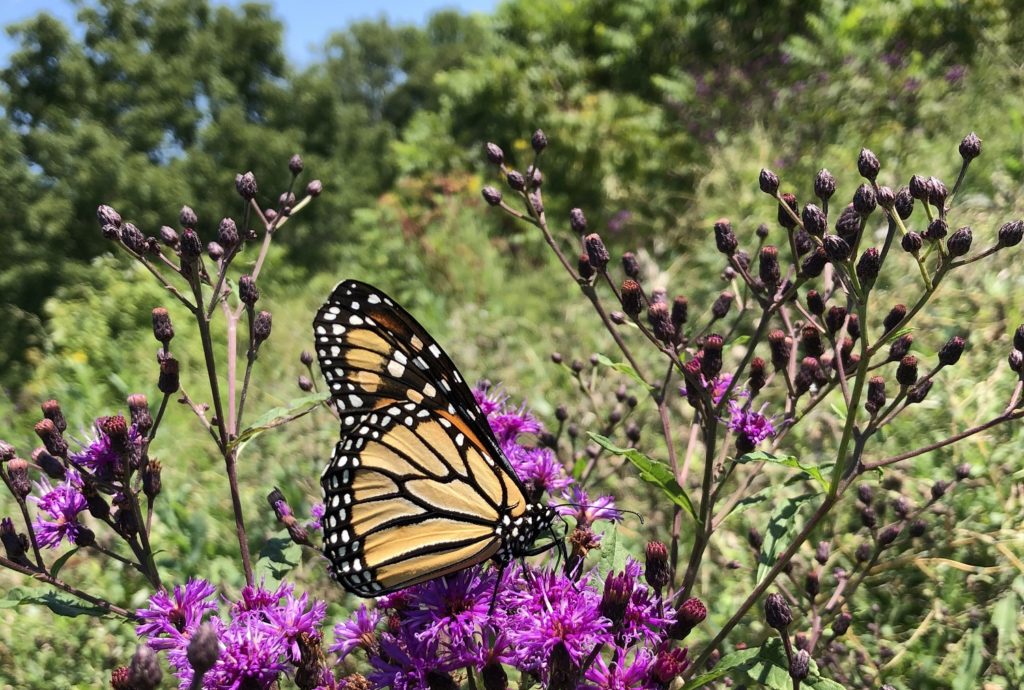
A monarch butterfly perched on a tall ironweed plant. Photo: Julia Hodson, INRF
GGS offers the equipment and skills necessary to create grassland habitat and provides those resources to private landowners. The program also offers assistance to landowners who wish to lease their ground out for limited participation in hunting opportunities for the general public, and it supports three full-time grassland biologists who oversee the entire project.
Duke Energy heard of GGS and saw an opportunity to make a positive impact on Indiana. Its contribution helped make the habitat restoration program a success.
“There are currently more than 2,600 acres that Indiana landowners have devoted toward GGS and 182 projects receiving financial assistance to develop habitat, thanks in part to Duke Energy Foundation’s contributions,” said Josh Griffin, farm bill specialist with the DNR Division of Fish & Wildlife.
Another habitat restoration project made possible by the generosity of our partner is the oak savanna restoration at Prophetstown State Park. Duke Energy contributed $20,000 toward the project, which enabled the planting of 223 oak and hickory trees in the spring of 2020.
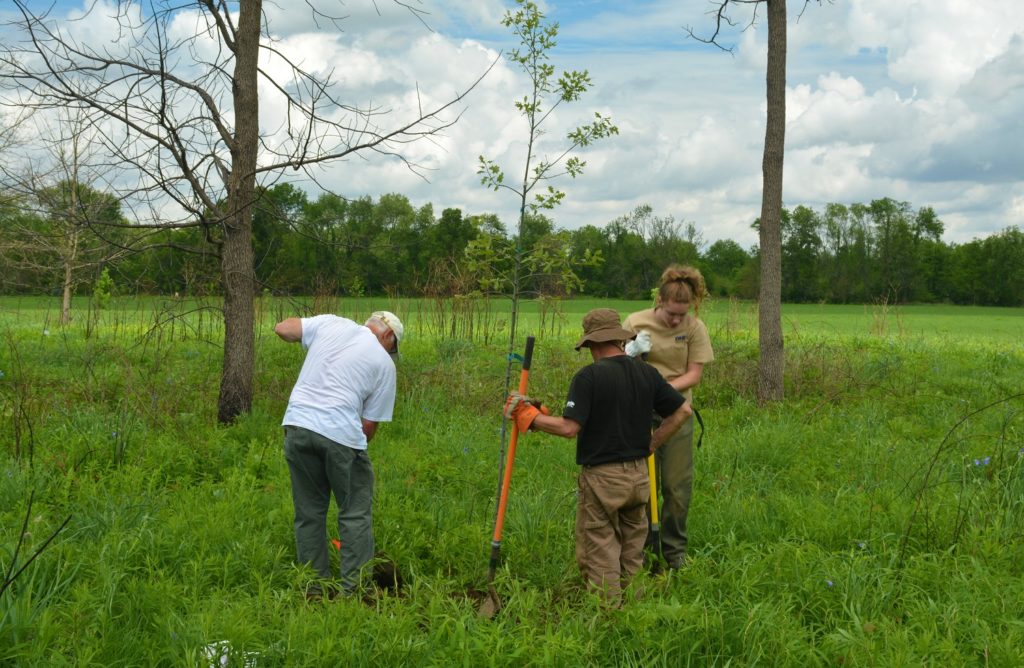
Volunteers and workers plant trees at Prophetstown State Park as part of the oak savanna restoration project. Photo: Julia Hodson, INRF
“With increased visitation this year, many guests commented on the trees and their excitement to watch them grow through continued visits to the park,” said Jason Getz, Prophetstown property manager. “As many of the trees are planted in highly visible areas, the interpreters also had the unique opportunity to discuss the importance of the oak savanna habitat and restoration work going on at the park with guests.”
Prophetstown is a distinctive state park, consisting of mostly prairie and savanna. The landscape was shaped over thousands of years by glaciers, moving water, fire and, recently, human hands as they work to restore the land. Savannas combine parts of both forest and prairie ecosystems, including scattered oak trees and a ground cover of grasses and flowers. They provide habitat for many species. European settlers cleared much of the Midwestern savanna for farmland. This resulted in the loss of habitat for those species. Indiana, along with several other Midwestern states, is working to restore the savanna.
“Without the support of the INRF and the Duke Energy Foundation, we would not be able to pursue large-scale planting projects like this one,” Getz said. “This project has helped jump start our savanna restoration plans for the park and has shown guests the value of one of the country’s most threatened ecosystems. We look forward to watching these trees mature as they grow to provide habitat high in wildlife value and bountiful in recreation potential.”
Visitors and outdoor recreationalists benefit from our partners’ support as much as wildlife does. Duke Energy contributed $20,000 toward interpretive displays at the Goose Pond Fish & Wildlife Area Visitors Center in 2019. The displays educate visitors about the wildlife that thrive in the area, particularly about the numerous bird species. Consisting of more than 9,000 protected acres, Goose Pond FWA is a popular location for birds during their winter migration. Sandhill cranes and pelicans are among the various species that visitors can see.
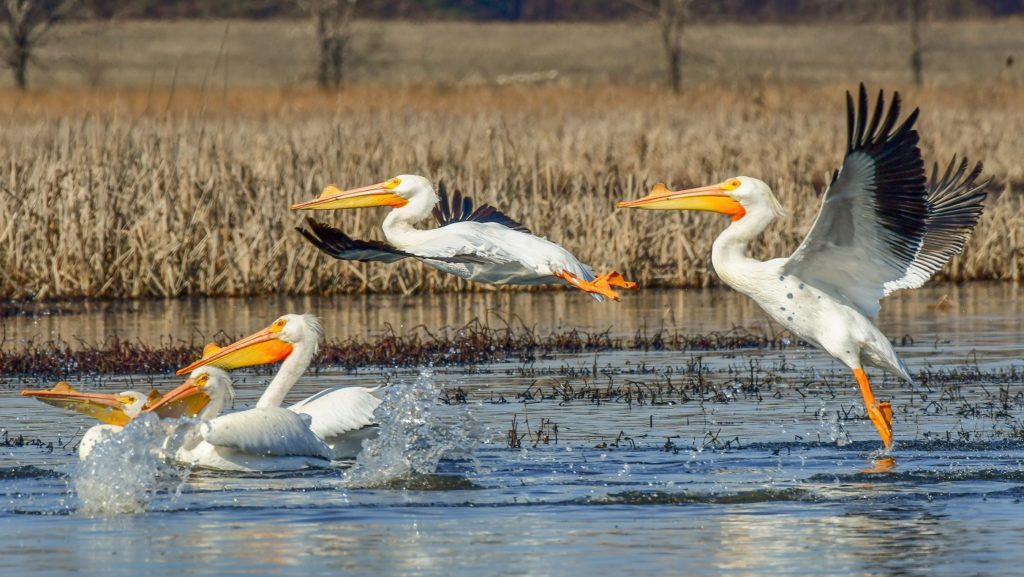
The Visitor Center had more traffic in 2020 than in any other year, and the public responded positively to the new interactive displays. Phase II of the displays will arrive in fall 2021. Plans include exhibits on wetland habitats, a life-size migratory flyway suspended from the ceiling, and a half-mile interpretive trail with educational signage.
“Thanks to our partners, the INRF and Duke Energy Foundation, we have been able to provide an opportunity for visitors to learn more about the habitats at Goose Pond and the wildlife that depend on them,” said Angie Haywood, assistant director of planning and public engagement for the Division of Fish & Wildlife. “This helps us with our mission of connecting more people to the outdoors. We hope once visitors learn about Goose Pond inside, they will be inspired to go outside and explore this special place.”
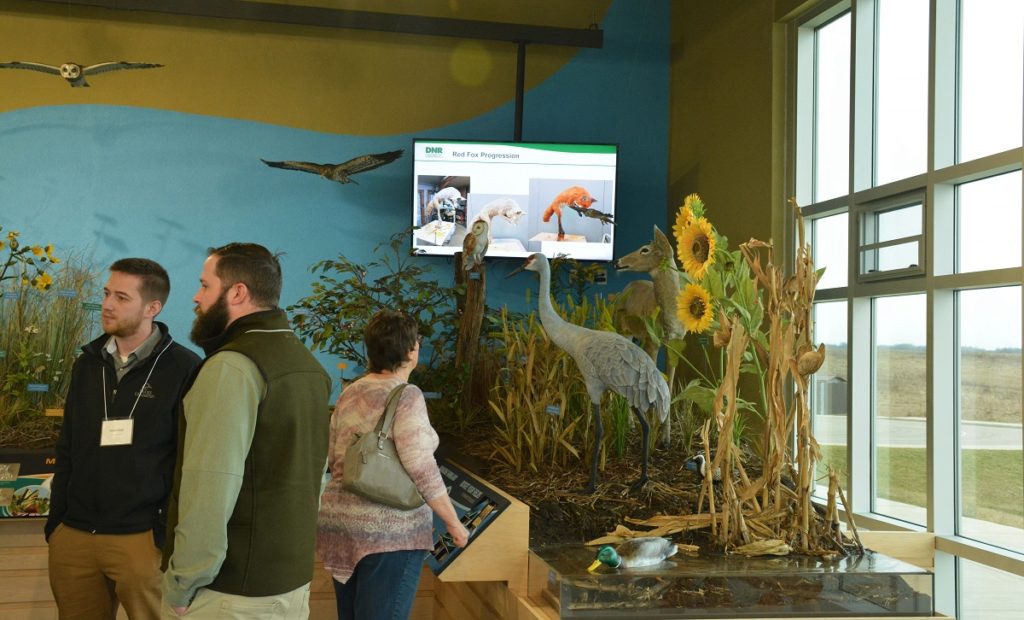
Visitors observe the interpretive displays at the Goose Pond Visitor Center in February, 2020. Photo: Julia Hodson, INRF
Recently, Duke Energy awarded a $150,000 grant to the INRF that will fund updates at Ravinia State Forest, including improvements to three parking lots and the construction of two new shelter houses that will have electric service and running water. Other planned improvements include the installation of signage and drainage to the trail system and adding picnic tables and grills. The work at Ravinia begins in springtime.
The $150,000 grant was the second to be awarded to the INRF in support of the DNR Division of Forestry. The first was a $25,000 grant toward the Indiana Tree Project, which allows for the planting of approximately 5,000 trees. The impact of planting new trees effects all Hoosiers as it improves air, soil and water quality.
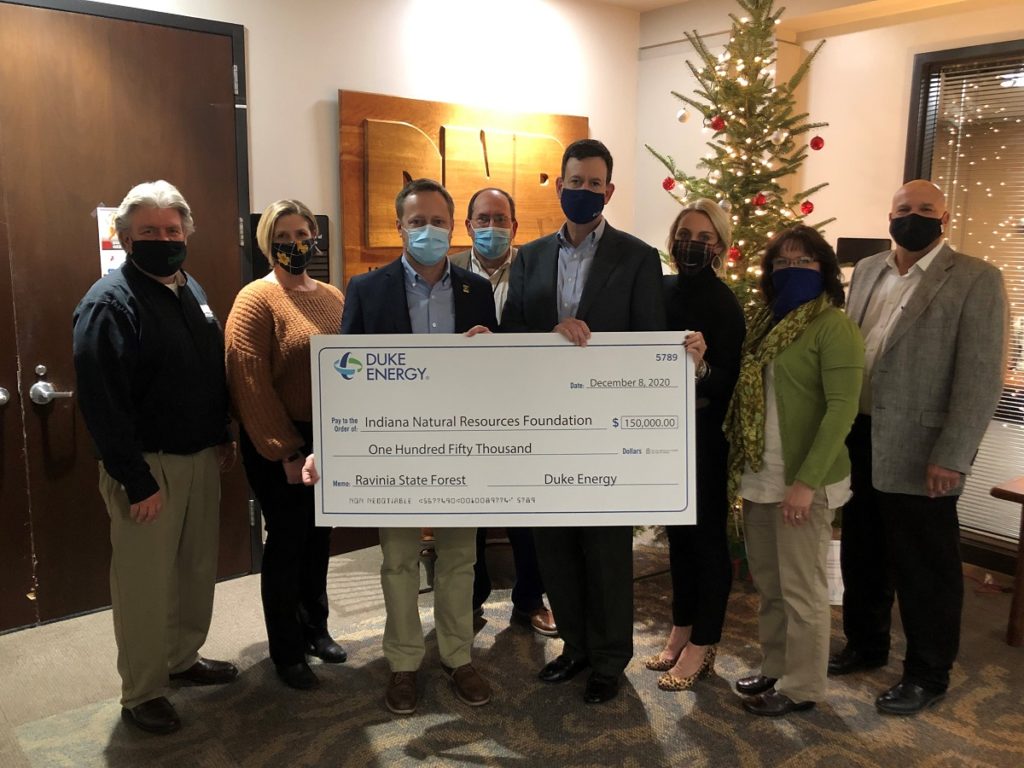
Pictured Left to Right: Dan Bortner, DNR director; Karen Valiquett, INRF Board secretary; Jody Kress, INRF executive director; John Siefert, DNR Division of Forestry director; Stan Pinegar, Duke Energy president; Laura Johnson, Duke Energy director of state government relations; State Rep. Peggy Mayfield (R-Bloomington); Bruce Calloway, Duke Energy government & community relations manager
“The DNR sincerely appreciates the vision and partnership that the Duke Energy Foundation brings to the Indiana Tree Project as it will provide next-level recreational opportunities that so many Hoosiers seek in today’s environment,” said John Seifert, director of the DNR Division of Forestry.
We echo these sentiments and sincerely appreciate the contributions from generous partners like the Duke Energy Foundation. Partnerships like this make our mission at the INRF possible. The work we do together benefits wildlife as well as the people who visit parks, forests, and other public lands to explore and learn about nature firsthand.
“The investments Duke Energy makes to support healthy habitats for our wildlife and improved recreation opportunities for Hoosiers demonstrates their commitment to improving communities across Indiana,” said Jody Kress, executive director of the INRF. “Their contributions continue to help the DNR improve the quality of life for Hoosiers and beyond.”
We thank our long-term partners at Duke Energy for showing they care about the programs that make a difference in conservation and in the lives of every Indiana resident.
Top Image: Whooping cranes at Goose Pond FWA. Photo by Frank Oliver, DNR.
